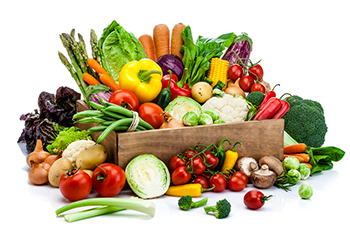
Which diet is the best?
Eating well is a guarantee of good health, have a healthy weight, also. But which is the best diet? Overview of principles and promises of different scientifically valid diets. Healthy eating is one of the best things you can do to prevent and control health problems such as heart disease, high blood pressure, type 2 diabetes, and some types of cancer. Still, many of us have a hard time facing our weight. Most people are “shocked” when they step on the scales.
Food is our third medicine according to Dr Seignalet. And scientific studies have not ceased to prove him right. Indeed, if bad eating straight leads to premature death and chronic disease, eating optimally is associated with greater longevity. Also, a chronic disease risk reduced according to scientific research.
Within this context, the promises of various diets must be examined with caution. Especially those plans which are the subject of marketing strategies to promote them. As there is no rigorous, long-term study that compared the effects of the most famous diets by following a methodology including any bias.

We will go to scan through 6 plans for which there are scientific studies showing that they are effective for losing weight. But also to stay healthy. Those diet are, the low-carb diets like Atkins, the low-fat diets / vegetarian, a diet with low glycemic index. Besides that, the Mediterranean diet, the mixed diet, balanced, the Paleo diet.
Low carb diets
The main rule of these diets, which Atkins is the leading one, is to strongly limit the consumption of carbohydrate foods. So, you make carbohydrates represent less than 45% of the total calories (compared with 45-65% in a classically balanced diet). As a result, the proportion of lipids and proteins (of animal origin to limit carbohydrates) increases.
Cereals, legumes and fruits are initially drastically limited. After that, gradually reintroduced in small doses.
Salads and vegetables (especially green) represent the main sources of carbohydrates.
In general, attention is paid to the quality of fats.
Low-fat diets / vegeterian diet
These diets recommend a daily fat intake less than 20% of the total caloric intakes. With blacklisting of dangerous fats for health.
Vegetarian diets are biased to plants (vegetables, fruits, legumes, cereals). Also, may include dairy products, eggs and sometimes the fish and seafood products. Diets low in fat and rich in vegetables seem to protect against cardiovascular disease. Note that a vegetarian diet is not necessarily low in fat, as a low-fat diet is not necessarily based on plants.

Low glycemic index diets
The GI Diet is intended to replace foods with glycemic index (GI). Which is raised by the low GI foods in order to control the blood sugar and make body to use fat as an energy source. In the GI diet, carbohydrates come from fruits, vegetables, legumes and tubers. Of course with the exception of the potato which should be consumed sparingly and oil-seeds. We can continue eating bread, pasta, cereal in moderate amount as long as these foods have a low GI. This diet allows a wide variety of food and is more interested in the quality of the nutrients than in their quantity. Fats are not prohibited. Again this is their quality that is important.
Mediterranean diet
Main food, but not exclusively, are plants. Animal products are consumed moderately. Preferably with fish and other seafood (for their omega-3 content). The main plants consumed are whole grains, vegetables, fruit and vegetables dry (or legumes), preferably of season. Besides that, nuts and seeds and olive oil are the main sources of fat. But, dairy products are present in moderate amounts, preferably from sheep or goat milk.

Balanced diets
This term refers to plans that conform roughly to the official dietary recommendations. These diets are rather rich in vegetables and fruits.
But on the other hand, limit processed foods. Also, this diet allows moderate meat and dairy products amounts. This is the case of the DASH diet, designed for people with high blood pressure.
Paleo diet
The paleo diet is designed to resemble what human hunter-gatherer ancestors ate thousands of years ago.
Although it’s impossible to know exactly what human ancestors ate in different parts of the world. Researchers believe their diets consisted of whole foods.
By following a whole food-based diet and leading physically active lives, hunter-gatherers presumably had much lower rates of lifestyle diseases. Such as obesity, diabetes and heart disease.
In fact, several studies suggest that this diet can lead to significant weight loss. Other than that, major improvements in health. But on the other hand, there is no one “right” way to eat for everyone. Even paleolithic humans thrived on a variety of diets. Depending on what was available at the time and where in the world they lived.

Some ate a low-carb diet high in animal foods, while others followed a high-carb diet with lots of plants.
Consider this as a general guideline, not something written in stone. You can adapt all of this to your own personal needs and preferences.
Here are the basics:
Eat: Meat, fish, eggs, vegetables, fruits, nuts, seeds, herbs, spices, healthy fats and oils.
Avoid: Processed foods, sugar, soft drinks, grains, most dairy products, legumes, artificial sweeteners, vegetable oils, margarine and trans fats.
